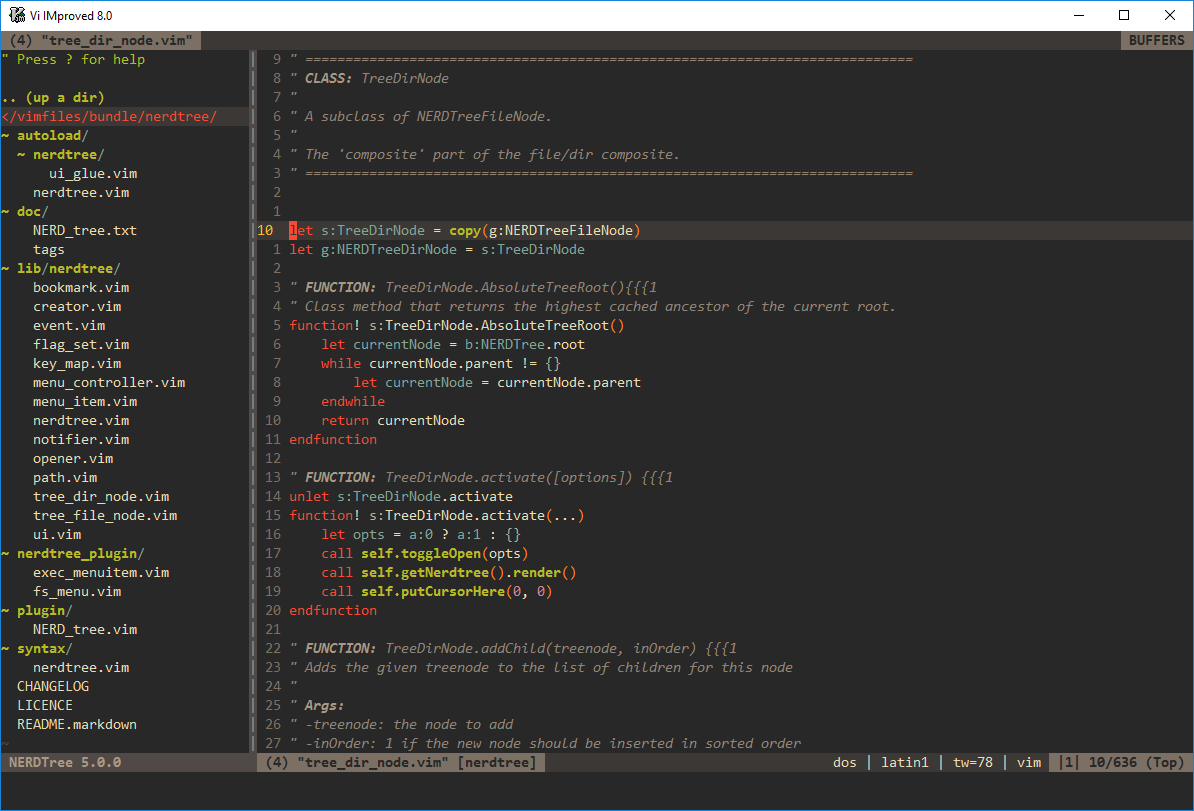

It turns out there was a simple cause for the problem: key repeat settings.
#WHAT IS THE BEST VIM FOR MAC MAC#
Scrolling with j and k was blindingly fast on Linux, but plodded along on my Mac so slowly that I began using Control-F and Control-B most of the time. There was always a marked difference between Vim on my Mac and Vim on Linux. Other times, the problem is really about Vim’s ability to render long lines with syntax highlighting.įear not! There are solutions to both problems. In some cases, the problem is OS-specific: key repeat settings can slow down scrolling with the j and k keys.

Here you will see a colon popping up on the screen which indicates that you should now enter a command.Vim, Neovim, and MacVim can all exhibit slow scrolling in macOS. The cursor will move to the message line.

To get to the command line mode in the vim editor, you have to press the colon key while you are in the normal mode. The command line mode offers an interactive command line where you may enter additional commands to control different types of actions in the vim editor. The vim editor carries a special feature in the normal mode that is known as the command line mode. The command num G in vim Linux editor is used to move to the line number in the buffer.The command G in vim Linux editor is used to move to the last line in the buffer.The command gg in the vim Linux editor is used to shift to the first line in the buffer.The command PageUp or Ctrl-b in vim Linux editor is used to move forward one screen of your data.The command PageDown or Ctrl-f in vim Linux editor is used to move forward one screen of your data.The command k in vim Linux editor is used to move up the cursor by one line.The command j in vim Linux editor is used to move down the cursor by one line.The command 1 in the vim Linux editor is used to move to the right by one character.The command h in vim Linux editor is used to move to the left by one character.The vim command includes those for cursor navigation, as you can see below: You can use the arrow keys in normal mode to move around the text so long as vim has detected the correct terminal type. To get into insert mode, press the i key, and to get out of it and back to normal mode, press the ESC key. In the insert mode, each key typed at the cursor is inserted into a buffer. When you open a file for editing, vim goes into normal mode, and certain keystrokes are interpreted as commands.

The vim editor has two operational modes - normal and INSERT mode. If the contents don’t take up the entire screen, a tilde is placed on the lines excluded from the file. The initial window will show the file contents and a message line at the bottom of the window. The vim editor detects the session’s terminal type and uses full-screen mode so the console window can use the editor area. If the editor is started without a filename being supplied, it opens but with no file. You have to type vim and the name of the file that you have to edit to open the editor with the desired file. The vim editor works well with the data that is in a memory buffer. It makes use of the console graphics mode for the emulation of a text-editing window, which allows you to see different lines of the file, move around across the files, and edit, insert or replace a piece of text.


 0 kommentar(er)
0 kommentar(er)
